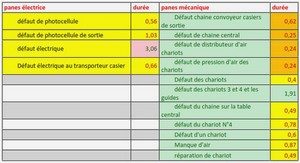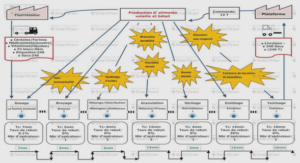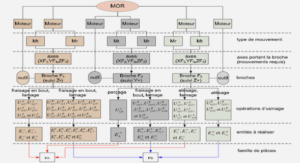Modern Gain Scheduling
LPV Gain Scheduling
The LPV (Linear Parameter Varying) gain scheduling approach is the major al- Motivation ternative to the linearization-based one presented in Chapter 1. This method has some advantages over the latter since it offers more serious stability guaranties for the gain-scheduled system. Even though it may also be used for purely LPV plants resulting from linearization of a nonlinear parameter-dependent system, it is most interesting when it is applied to an over-bounding q-LPV reformulation of the nonlinear system. This method can also incorporate bounds on the scheduling vector rates (and thus reducing conservatism) using parameter-dependent Lyapunov functions. However in some cases it may be rather conservative due to this reformulation incorporating redundant trajectories that may not belong to the nonlinear system and in addition, it does not offer feasibility guaranties for the existence of the gain-scheduled controller. During the last fifteen years there has been a true wealth in the bibliography on these methods and several issues continue to be treated; the following analysis attempts to give only some of the basic results concerning this approach, being mainly divided in two major categories: polytopic and LFT gain scheduling.
Polytopic Approach
The polytopic approach in LPV gain scheduling is very common in the scientific Control goal community and has been extensively studied; the results presented here are taken mainly from [13]. The main goal behind this approach is to calculate a gain-scheduled controller K(s,̺) that will guarantee internal stability and in addition quadratic H∞ performance γ on the performance vector ζ∞ over external disturbances w and for all admissible values of the scheduling vector components ̺i (see Fig. 2.1).The class of systems considered have an affine dependence of their state space matrices on the scheduling vector components and in addition the scheduling vector takes values inside a convex polytope1 .Searching for a (single) Lyapunov matrix X = XT > 0 that satisfies the BRL2 ensuring quadratic H∞ performance for a generic (not polytopic) LPV (or q-LPV) plant poses an infinite number of constraints; however for the polytopic case, the problem is tractable and reduces to a finite number of constraints posed for each vertex of the polytope. This is the result of the famous vertex property Vertex stating that the following two arguments are equivalent: property • The polytopic LPV system is stable with quadratic H∞ performance γ. • There exist a single matrix X = XT > 0 satisfying the collection of LMI’s3 : B[Ai cl,Bi cl,Ci cl,Di cl] (X,γ) < 0, i = 1,. . ., r. Controller The gain-scheduled LPV controller sought will also be of polytopic form and computation the LPV synthesis problem is primarily to find a common Lyapunov matrix for all vertices; this is done considering the corresponding set of the classic LMI feasibility conditions, given also in Section 3.3.3.2 of this report. The LMI’s are in fact solved for two matrices R, S and the Lyapunov matrix is finally constructed solving some matrix equations. Once the feasibility conditions are met and the Lyapunov matric X computed, all vertex controllers: Ωi = µ Ai k Bi k Ci k Di k ¶ (2.1) may be sequentially computed either by solving the BRL’s either by the same convex optimization algorithms or symbolically. The final LPV controller will be of the form K(̺) : x˙ k = Ak(̺)xk + Bk(̺)y u = Ck(̺)xk + Dk(̺)y (2.2) and its matrices computed as a convex combination of the vertex controllers, using the current/measured value of the scheduling vector ̺(t). Additional For a similar treatment of the problem see [18]; being one of the first works work on the subject. A multi-objective approach treating simultaneously H∞ and H2 performances, passivity, asymptotic disturbance rejection, time-domain constraints and constraints on the closed loop location for different channels of the closed loop system with a common Lyapunov function is given in [115]. A good reference on advanced gain-scheduling techniques in order to reduce computational burden is proposed in [9]. Parameter-dependent controllers if the scheduling parameters are real are using a skew-symmetric technique is presented in [117] whereas some work using the elimination lemma is proposed in [126]. Finally, other more recent approaches may be found in [5, 127, 154].
LFT Approach
The LFT (Linear Fractional Transformation) gain scheduling approach is an important alternative to the standard Lyapunov-based LPV one. Perhaps the one of the first and most widely known attempts to deal with this formulation can be found in [12] and the material presented in this section is mainly drawn from there. This method is different from the classical polytopic one since it does not LFT vs. Polytopic require an affine dependence of the system’s state space matrices on the timevarying parameters ̺i since they enter both the plant & controller dynamics in a specific way. In addition, concerning implementation, the parameter vector need not be expressed as the convex combination of its vertex values. However, this method may become cumbersome when the plant’s LFT form needs to be computed since it is highly non-unique and the designer may need repeated parameter blocks, thus increasing the order of the system. The main idea behind this method is to re-cast the initial gain scheduling Modeling problem as one of robust performance in the face of structured uncertainty using small gain theory. In the beginning the designer performs the following procedure: starting from a generic nonlinear parameter-dependent plant Spd as in Eq. 1.22 (with ̺(t) being the on-line measured parameter/scheduling vector) obtains a q-LPV re-formulated system Sq−LPV (see Eq. 1.24) or an LPV one using Jacobian linearization (see Eqs. 1.26-1.29). From this point, an equivalent u-LFT formulation of this system is calculated as a specific connection of a block-diagonal parameter block Θ, containing the measured parameters (see Eqs. 1.30-1.31 and Fig. 1.5)4 . This u-LFT connection is written as: · ζ∞ y ¸ = Fu ¡ P, Θ ¢ · w u ¸ (2.3) where ζ, y,w, u are once again the performance, controller input, perturbation and controller output vectors respectively. The gain-scheduling problem now is to find a time-varying controller having a Control goal similar l-LFT formulation as the plant; thus find a control input u that satisfies: u = Fl(K, Θ). (2.4) This specific structure of the ‘time-varying’ uncertainty interconnection between the system, the controller and the scheduling vector block containing the varying parameters is depicted in Fig. 2.1. Alternatively, the overall feedback connection may be expressed as T(P,K, Θ) = Fl ¡ Fu(P, Θ), Fl(K, Θ)¢ (2.5) and the corresponding H∞ control problem may now be posed as follows: 4The parameters are supposed to be confined to a ball with radius γ −1 , with γ being the corresponding H∞ performance level; however a re-scaling on the input perturbations may be performed in order to permit larger variations.





